2021 BMW X5 XDrive45e PHEV Review: Strong and Silent Type

FAST FACTS
| Engine: | 3.0L I6 Turbo w/ electric motor |
| Output: | 389 hp, 443 lb-ft (combined) |
| Transmission: | 8AT, AWD |
| US fuel economy (MPG/MPGe): | 20/50 |
| CAN fuel economy (L/100KM / Le/100KM): | 11.5/4.7 |
| Starting Price (USD): | $66,395 (inc. dest.) |
| As-Tested Price (USD): | $79,545 (est, inc. dest.) |
| Starting Price (CAD): | $85,980 (inc. dest.) |
| As-Tested Price (CAD): | $104,330 (inc. dest.) |
It seems like forever ago, but the BMW X5 practically began the modern luxury crossover movement.
Sure, there was the Lexus RX, but that was running around on a modified Camry platform—hugely successful, but lacking the necessary pedigree. There was the Mercedes ML too, now known as GLE. It had the publicity of The Lost World: Jurassic Park to lean on, yet body-on-frame construction made it more truck-like.
Get a Quote on a New BMW X5The X5 essentially repackaged the 5 Series Touring in a way that would become more palatable to North American buyers. In a similar vein, plug-in hybrids are a compromise too, a halfway-house for those wanting a taste of EV ownership without fully committing quite yet.
Put them together and you’ve got this, the 2021 BMW X5 xDrive45e. It’s a silly name for a clever crossover, one that finds a sweet spot in the crowded mid-size segment—if you’re willing to make a few sacrifices.
What’s new?
For 2021, BMW has updated the plug-in X5 to give it more power, both from the gas and electric sources. The smooth-revving inline-six now sits underhood, in place of last year’s four-cylinder. On its own the 3.0-liter produces 286 horsepower and 332 pound-feet of torque. An electric motor pairs with the ICE for a combined 389 hp and 443 lb-ft of torque. A 24.0-kWh battery pack is onboard, enough to give the X5 PHEV a 30-mile (48-km) all-electric range. Expressed another way, this big bruiser is also capable of sprinting to 62 mph (100 km/h) in 5.6 seconds.
SEE ALSO: 2021 Mercedes-AMG GLE 53 Review: Mild-Mannered Mild-HybridJuicing the battery back up takes a little over 5 hours on a Level 2 outlet, using the onboard 3.7-kW charger. There’s also the option to have the gas engine do the recharging itself while on the move—though of course, this increases fuel consumption, largely negating the advantage of a PHEV anyway.
The rest of the package is largely the same X5 goodness we’ve known since the G05 generation debuted in 2019. In this writer’s eyes, BMW’s original SUV remains the best-looking of the X family, with handsome, classic styling cues. There’s little to clue folks in on this mid-sizer’s electrified nature, unless they clock the charge port just aft of the driver’s side front wheel. That and the tell-tale 45e badge on the split-opening tailgate are the only exterior signs this X5 is packing battery power.
Driving experience
I’m a big fan of the current turbocharged BMW inline-six, and augmenting it with the instant-access torque of an electric motor improves the package. With both propulsion systems working in parallel, the X5 is quick, effortlessly swimming through traffic and passing dawdlers on the highway. The EV side also means the standard start-stop is even smoother, and BMW’s system was already one of the best out there.
There are six drive modes available to drivers, from pure Electric to full-power Sport. I never quite matched the quoted EV-only range, but the X5 was never far off—and to its credit, it was a chilly spring week. Eco Pro prioritizes efficiency, switching off the straight-six whenever possible. Adaptive will learn from your driving style and adjust accordingly, while Individual allows drivers to tailor the setup to their liking.
SEE ALSO: Genesis GV80 vs BMW X5 ComparisonThe X5 rides with a serious sense of heft, because, well, it’s chunky. The added complexity of a PHEV model has packed on the pounds, to a startling 5,646 lb (2,561 kg). It’s well-mannered thanks to the standard air suspension, and while the ride is firm on those optional 21-inch wheels, it’s not uncomfortably so. The X5 feels resolutely secure on the road, and the low placement of the battery packs means it retains clear, responsive steering. This is a big vehicle these days, but the X5’s clear sight lines make it easy to place on the road.
Regenerative braking can be a tricky beast to tame in electrified cars. No worries here: the left pedal is smooth and progressive, with little hint at any switchover between regen and friction braking.
SEE ALSO: 2022 Acura MDX Review: A Fitter FlagshipLap of luxury
The X5’s interior is well-appointed in that typical BMW way: full of tech, yet somehow also conservative in execution. A fully digital instrument panel provides all the necessary mission control info, including available EV-only range. A head-up display beams onto the windshield just above the wheel. At the top of the dashboard sits a 12.3-inch touchscreen, angled slightly towards the driver.
iDrive has a distinct learning curve at first, with lots of sub-menus being its biggest weakness, but the ability to either use the screen or the rotary dial in the center console means one good session should have you familiar in no time. This tester features the blingy crystal dial (and shifter). They look cool, but in the right light they’ll do their best to blind you, like someone angling their watch’s reflection in your face. Wireless Apple CarPlay and Android Auto are both standard, and a wireless charge pad is here, too. One huge boon for iPhone users: BMWs will actually incorporate Apple Maps directions into the instrument panel, not just the native navigation.
The extended Merino leather seats are incredibly comfortable, with a wide range of adjustments, including the headrest curvature. That last bit sounds superfluous, until you get into something without it. There’s heating and ventilation for both rows, too. Yes, just both: BMW doesn’t offer the PHEV with a third row, as the battery pack sits under the rear floor. That also eats into cargo space, which is on the small side at 33.1 cubic feet (937 liters). Fold the second row down and it’s still only 56.5 cubes (1,600 L).
Other goodies ease the pain. Four-zone climate control means almost everyone can relax in their preferred temperature (sorry, middle-seat rider). Vents in the B-pillars help here. The second row has access to seatback-mounted USB-C ports and a 12V outlet as well, and sunshades if occupants are tired of seeing the world outside. Up front, the cupholders are both heated and chilled.
SEE ALSO: 2021 Lincoln Aviator Grand Touring Review: Mixed SignalsOn the driver-assistance front, the 45e comes standard with front- and rear collision alert and braking, blind-spot monitoring, and lane departure warning. You’ll need to pony up additional cash for adaptive cruise control and front cross-traffic alert. ACC comes with Traffic Jam Assist, which works in concert with lane centering to keep the X5 running smoothly with stop-and-go traffic. A drive recorder also stores video to be played back at any time.
What’s the competition?
The luxury mid-size SUV segment is flush with options. Fellow Germans the Audi Q7 and Mercedes GLE are the two most obvious competitors, and there’s also the Porsche Cayenne if you’re looking for an even more athletic drive. Both the Audi and Merc offer mild-hybrid formats. The Porsche comes in not one, but two plug-in setups, and like the X5 PHEV, is only available with two rows of seats. The Cayenne E-Hybrid has a higher entry price—to say nothing of that famously long Porsche option list—but it also boasts 455 hp standard.
SEE ALSO: 2021 Genesis GV80 Review: Putting ‘Em All on NoticeIf comfort is your priority, there’s the Lexus RX. It’s the sales leader of the segment, and includes a hybrid option, but can’t match the power or luxury features of the Bimmer. Acura has recently redone the MDX, and an upcoming Type S model should align well with the X5 xDrive40i. Sticking to gas-only options, we can’t skip over the Genesis GV80, our current AutoGuide Luxury Utility Vehicle of the Year, and the winner of an earlier head-to-head with this very X5.
Possibly the most direct competitor is the Volvo XC90 T8. The stylish Swede pushes out similar power figures (400 hp, 472 lb-ft), and last time we drove the XC90, it rang in just $65 CAD more than the X5. The Volvo has less EV-only range (18 miles / 29 km), but speccing the electrified powertrain doesn’t nix the third-row seating.
Speaking of price, the X5 PHEV starts from $66,395 ($85,980 CAD), including destination. Our well-optioned Canadian-spec tester cracks the six-figure barrier, ringing in at $104,330 CAD. A loaded US model will slide in just shy of $80,000. This tester includes a handful of goodies unavailable south of the border, including a sweet-sounding Harman Kardon audio system. Only Americans will benefit from a $7,500 federal tax credit, however.
Verdict: 2021 BMW X5 xDrive45e PHEV Review
The X5 is one of the most popular choices in its segment for good reason. It remains a finely-honed blend of practicality, luxury, comfort, technology, and yes, genuine driving enjoyment.
The xDrive45e is the easy choice for those wanting to explore the electrified world, but aren’t ready to make the jump to fully electric quite yet. If their daily commute is the right length, they could go weeks between fill-ups. Factor in the available tax credit (in America), and the xDrive45e becomes the pick of the X5 lineup in my eyes. Just so long as you don’t need that third row.
Become an AutoGuide insider. Get the latest from the automotive world first by subscribing to our newsletter here.
LOVE IT
- Accurate EV-only range
- Same great X5 package
- Well-appointed interior
LEAVE IT
- Two-row seating only
- 3.7-kW charger is slow
- Can feel its chunky curb weight

Kyle began his automotive obsession before he even started school, courtesy of a remote control Porsche and various LEGO sets. He later studied advertising and graphic design at Humber College, which led him to writing about cars (both real and digital). He is now a proud member of the Automobile Journalists Association of Canada (AJAC), where he was the Journalist of the Year runner-up for 2021.
More by Kyle Patrick






























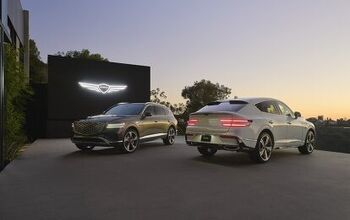

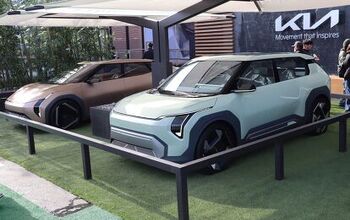



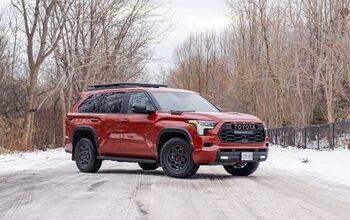
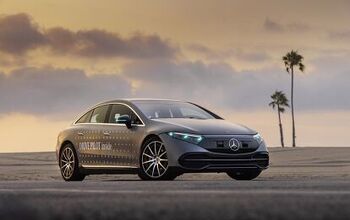
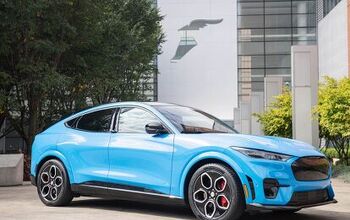

Comments
Join the conversation